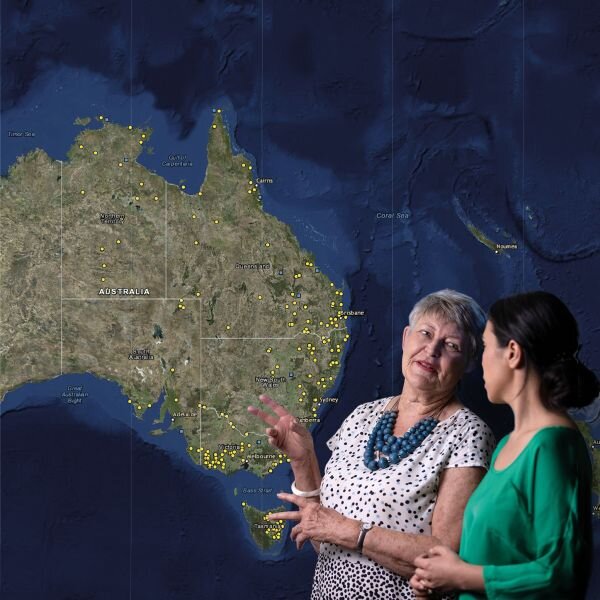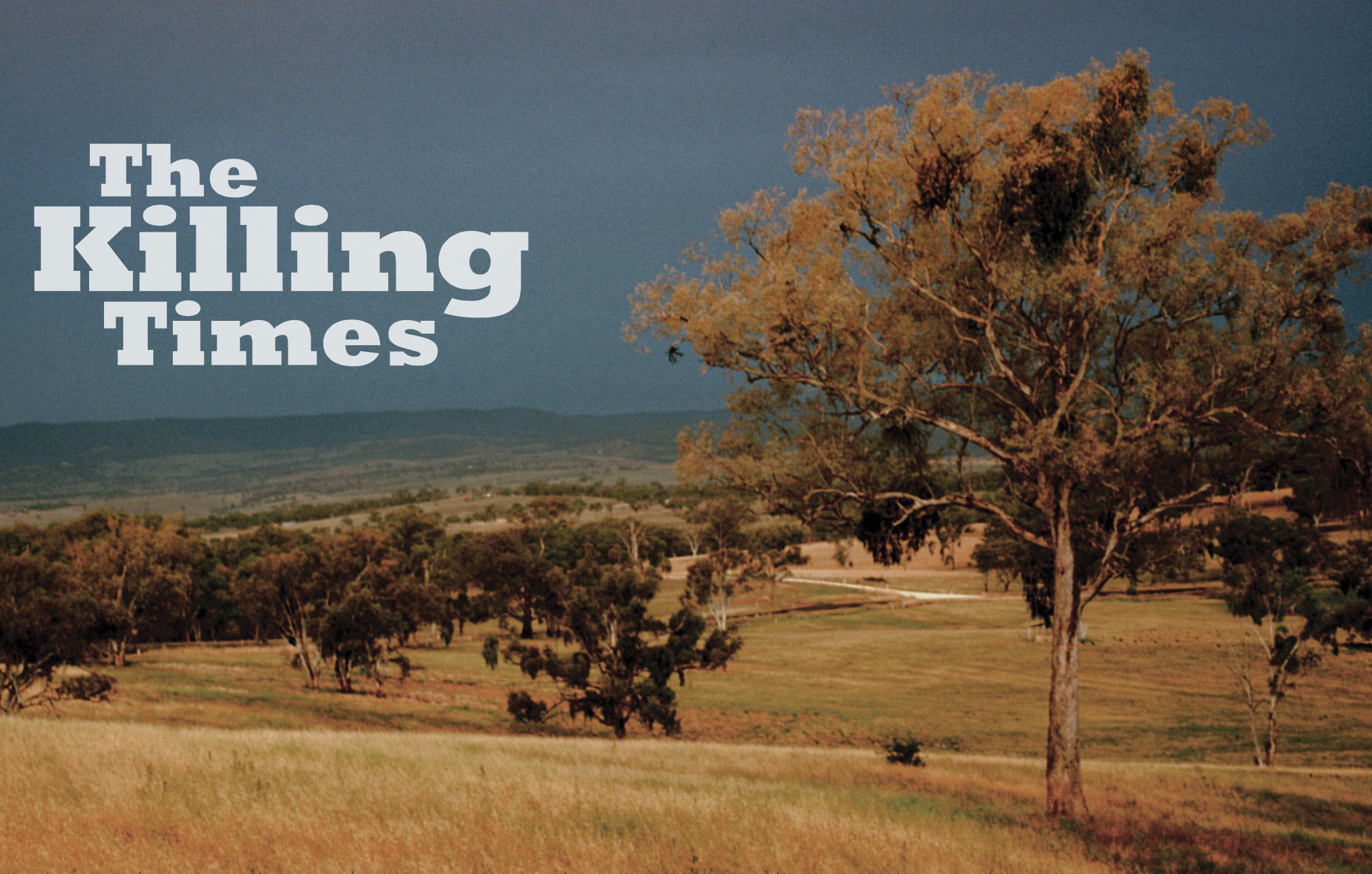Massacres & Makarrata - Truth-Telling or Moving-on? It's Our Choice.
One of the main themes of the Uluru Statement from the Heart is the concept of what the Aboriginal political activists call a Makarrata, which involves a Truth-Telling about our History. A significant part of Truth-Telling is an open discussion about the massacres and killings that occurred between Aboriginal people and the settlers.
Two main web-sites have been set up to document these massacres and killings. One is pioneered by historian Professor Lyndall Ryan at the University of Newcastle, and a second is a more recent, flasher one at the Guardian on-line newspaper, and is also based on Dr Ryan’s original data.
Of course, in keeping with the anti-colonial, ‘let’s denigrate Australia’ narrative commonly found in Academia and the Progressive-Left media today, these two Massacre Maps overwhelmingly detail killings of Aboriginal people by the British and Australian settlers, explorers, police and government forces. Only a handful of the best known massacres carried out by Aborigines on non-Aboriginal people are listed.
To help address this imbalance, and to add our bit to the Truth-Telling process that will inevitably pickup speed over the coming years, we plan to construct three new ‘Massacre and Killing Maps’ and data-bases.
The first is, Aboriginal Inter-tribal Massacres and Killings, which will document all the massacres and killings of Aboriginal people by other Aboriginal peoples. To date we have data on some 200 inter-tribal massacres and killings. As we write-up this data, we will post it on our Aboriginal Inter-tribal Massacres and Killings map below.
Our second map will document, Tribal Aboriginal Massacres and Killings of other Australians. This data base will document the very large number of non-Aboriginal people killed by the Aborigines in a tribal or frontier context. (That is, it will not include killings by Aboriginal people in towns and cities, or in modern times). This Map will be ready for posting in a month or two.
Thirdly, we plan a Massacre Map which will list the, Massacres That Did Not Happen. These ‘phantom’ massacres are often quoted as being ‘fact’ and indeed, there are even several included in Professor Ryan’s and the Guardian’s Massacre Maps, but as we will show, there is no substantial evidence for their occurrence.
Aboriginal societies were maintained by laws which required institutionalized violence for their maintenance over the 50,000 years of occupation. This created the conditions for ongoing structural violence, resulting in regular, systematic and ritual conflict that varied from display-parrying right up to whole clan or tribe extirpation and genocide. These practices were so normalized by 1770-1788 that many Aboriginal Nations were unable to negotiate or treat with the British settlers at First Contact in a legal, non-violent way. This normative narrative of systematic and structural tribal violence allows us to make sense of the failure of Aboriginal societies to successfully make agreements with settler colonialism.(Note 1 below).
1. Aboriginal Inter-tribal Massacres and Killings Map
This is a work in progress and Massacre and Killing sites will be added as we write them up. We have draft data on approximately 200 massacres and killings of Aboriginal people by other Aboriginal people during the normal course of life in an Aboriginal society.
Our sources are our own Dark Emu Exposed research, The Aboriginal Collective Conflicts Database of Christophe Darmangeat, Lecturer in Economics and Social Anthropology, Université de Paris and author of Justice and Warfare in Aboriginal Australia [for consistency we have adopted Dr Darmangeat’s conflict codes] , historian Ray Kerkhove’s cited works, and many others.
The approximate tally of Aboriginal deaths in our Inter-tribal massacre data set for the years of about 1803 to 1923 is 3433 or 29 deaths per year over teh 120 yr period (as of 7/7/2021)
Software & Code by : Les, (Grandpa at Dark Emu Exposed) - Cost : $1027
Professor Lyndall Ryan with the map of the Colonial Frontier Massacres (c) Rolla Films
The research was funded by the Australian taxpayer through the Australian Research Council (ARC). The ARC grants which have involved Lyndall Ryan that we have located include
ARC Grant 1 (2011) for $240,000
ARC Grant 2 (2014-16) for $289,000
ARC Grant 3 (2015-18) for $500,137
Total = $1,029,137
2. Colonial Massacre Map
Professor Lyndall Ryan, of The University of Newcastle, has published a Colonial Frontier Massacre Map. This covers massacres in Australia from 1788 to 1930 to provide a national picture of the extent of Aboriginal and settler violence.
The Massacre Map is described as an important ‘truth telling’ project to change the way we understand the violent and traumatic period of our colonial history.
“In the past there has been a denial of the violence that took place, and Australia’s true history has largely been invisible,” said Professor Ryan.
The research shows that at least an estimated 8400 people were killed during 311 massacres that took place between 1788 and 1930. Most of the victims were Aboriginal and Torres Strait Islander people.
Update 13 April 2022 - Melbourne University joins the ‘gravy-train’ with their announcement :
The Australian Research Council has awarded $488,142 to the Melbourne Institute of Applied Economic and Social Research for their project on historical frontier violence: drivers, legacy and the role of truth-telling…A grant sum of $488,142 will help resource the group's fieldwork and develop new knowledge on the circumstances and legacy of settlement, and the associated gaps in life prospects between Indigenous and non-Indigenous Australians as a result of this settlement.
The project aims to increase public support for truth-telling and improve relations between Indigenous and non-Indigenous Australians in a vital step towards reconciliation and healing the nation.
Guardian Massacre Map - The Killing Times, sponsored by the Balnaves Foundation.
3. The Killing Times
Guardian Australia, with funding by the Balnaves Foundation, has taken Professor Ryan’s data from above and spruced it up to produce a much better, flashier (but not necessarily more accurate) Massacre Map called The Killing Times.
This site is,
‘a collection of as much accurate information as we can provide at this time about what took place on the frontier of colonisation. What happened near your suburb, town or district?…The mapping of our turbulent history is happening in many forms across the country, through painstaking research by historians, archaeologists, artists and descendants on all sides. The process of truth-telling is ongoing. Last updated: 18 November 2019.’
4. Tribal Aboriginal Massacres and Killings of other Australians.
Coming Soon
4. Massacres That Did Not Happen
Coming soon
Note 1 : It is so easy to write this Post-modernist rubbish today. All one needs is to do a quick Google search with a few key words like, ‘aboriginal settler colonial other massacre’ and voila!, one can pick from a selection of anti-colonial Post modern ‘rubbish’ papers such as,
Settler-Colonial Violence, Primitive Accumulation and Australia's Genocide, by Michael Grewcock writing in State Crime Journal, Vol. 7, No. 2, State Crime and Colonialism (Autumn 2018)
We just need to take Michael ‘do I hate my country?’ Grewcock’s Abstract below and pickup the key words, then manipulate and substitute accordingly to get an anti-Aboriginal history, pro-Colonial history summary that has a good Post-modernist tone to it. And is more accurate with regard to our real Colonial history to boot!
Original Abstract here
This article explores ways in which state crime theory, which is predominantly based on contemporary conceptions of human rights, might be applied to settler-colonial violence and the forced dispossession of the land from Indigenous peoples. The Australian state was established through the foundational violence inherent to settler colonialism and the processes of primitive accumulation that underpinned it. This created the conditions for ongoing structural violence, inflicted through a continuum of criminogenic, arguably genocidal state practices designed to disrupt – if not eliminate – the social worlds and collective identities of Indigenous peoples. These practices have been normalized through Australian nationalist ideology and its associated narratives of progress, democracy and the rule of law. Theories of state crime need to break from these normative narratives to make sense of the criminogenic nature of settler colonialism.
Our Converted Version after some heavy ‘Pascoesque’ treatment.
Aboriginal societies were maintained by laws which required institutionalized violence for their maintenance over the 50,000 years of occupation. This created the conditions for ongoing structural violence, resulting in regular, systematic and ritual conflict that varied from display-parrying right up to whole clan or tribe extirpation and genocide. These practices were so normalized by 1770-1788 that many Aboriginal Nations were unable to negotiate or treat with the British settlers at First Contact in a legal, non-violent way. This normative narrative of systematic and structural tribal violence allows us to make sense of the failure of Aboriginal societies to successfully make agreements with settler colonialism.











